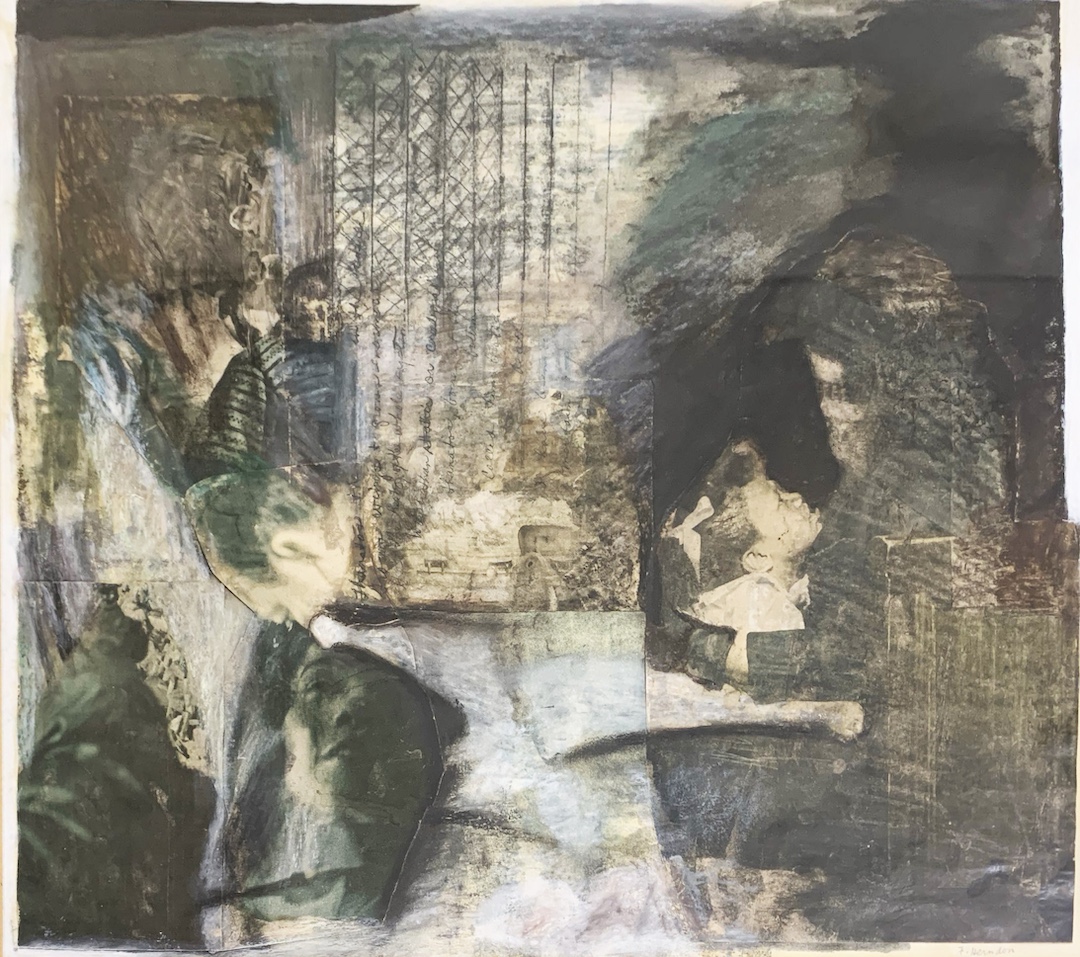

an introduction
Isabelle Sully | Artistic Director, A Tale of a Tub
At home on The Back Room in San Francisco, this collection of texts was first commissioned from New York via Rotterdam, in the context of an exhibition titled The Clock Wife, on view at A Tale of A Tub from October 25, 2025–January 25, 2026. Indebted to two forms of labour that are historically gendered—the emotional and administrative—the exhibition focuses on artist estate management by presenting four estates through the eyes of the women overseeing them: Marja Bloem presenting her partner Seth Siegelaub; Sue Cramer and Emma Nixon presenting husband and father John Nixon; Johanna Monk presenting her beloved Vanita Monk; and Juf (Bea Ortega Botas and Leto Ybarra) presenting their peer Fran Herndon.
While still acknowledging the artists around whom each of the estates revolve, The Clock Wife spotlights the work of the executors themselves. In order to do so—to translate otherwise invisible registrations of labour into a format that insists on certain kinds of visibility: the exhibition—each estate has been asked to disclose a current need facing them, one that, if filled, would better equip them to do the work at hand. In turn, the exhibition budget, as well as aspects of the broader institutional budget that pertain more specifically to some of the needs, has been redistributed towards tending to them.
With this backdrop in mind, cue this very folio, which was initiated by Ortega Botas and Ybarra— currently, and on their own initiative, undertaking responsibilities linked to the establishment and management of Fran Herndon’s estate—after noting a desire for more scholarship on Herndon’s work. In elaborating on Herndon’s practice and distributing the findings across the geographical network forged between Small Press Traffic, A Tale of A Tub and Juf, Ortega Botas and Ybarra further their work in the establishment of this estate, continuing to care for the legacy of Fran Herndon in a manner that seems wholly fit for her work. Beyond art historical legacies and histories of gendered labour more broadly speaking, in the marginal spaces of the emotionally administrative—the scribbled inscriptions housed in archival systems so personally felt that they refuse objective organisation—there is a lot to be learned from and to acknowledge in the commitment of estate managers. This exhibition and corresponding folio is an attempt to begin that process.
Maxe Crandall | Executive Director, Small Press Traffic
This folio extends the work of The Clock Wife by engaging the exhibition’s inquiry into the forms of care, administration, and imagination that sustain artistic legacies. The collaboration between Small Press Traffic (San Francisco), A Tale of A Tub (Rotterdam), and Juf (New York City/Madrid) brings into dialogue three distinct yet interdependent modes of cultural labor: the grassroots commitment to literary and artistic community; the curatorial endeavor of an exhibition space attentive to the politics of visibility; and the experimental practice of a collective whose work moves between critique and care. Each partner contributes to an evolving conversation about how the labor of tending to artists’ legacies—often unpaid, obscured, gendered and racialized—might be understood as a critical and creative practice in its own right.
Our collaboration coalesced during the organizing of Small Press Traffic’s 2025 Fall Symposium Poetry as Magic: Celebrating the Fran Herndon & Jack Spicer Centennials, which convened poets, scholars, and artists on the intertwined legacies of Herndon and Spicer. While the centennial occasion provided the impetus for honoring these two dynamic artists, their friendship, and collaboration as a cultural force, what emerged from the gathering was a reflective conversation on the ongoing, often unrecognized projects of maintenance and uplift that define artistic life. To engage with Herndon’s work is not only to celebrate a singular painter of the San Francisco Renaissance but also to encounter the dense social and affective networks that shaped and sustained that milieu. The essays and reflections collected here respond to that inheritance, asking how the energies of collaboration, friendship, and mutual care might continue to animate contemporary artistic practice.
Juf’s editorial choice to house this folio on The Back Room situates the conversation in Herndon’s artistic home of San Francisco, honoring the city where she developed her practice and participated in a vibrant community of artists and poets, as well as those who continue to sustain her legacy here. In tracing the legacy of Fran Herndon across this transnational collaboration, the folio stages an experiment in how institutions, collectives, and communities might share responsibility for the work of critical preservation and interpretation. It understands such work as generative: a site where new aesthetic and intellectual connections take form. By situating Herndon’s practice within an ecology of attention and care, this project honors the ways in which artistic legacies persist—not through the authority of archives and institutions, but through the ongoing, relational labor that keeps the work of artists we love in circulation.
October 27, 2025 | Isabelle Sully & Maxe Crandall
November 4, 2025 | Juf
November 24, 2025 | Tumelo Mtimkhulu
December 19, 2025 | Sanja Grozdanić
January 13, 2026 | Ariel Goldberg
